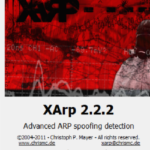
Why Are People So Bearish on Ethereum? Exploring Concerns
Ethereum, the world’s second-largest cryptocurrency, has experienced a remarkable rise over the past few years, capturing the attention of investors and enthusiasts worldwide. However, in recent times, a growing sense of bearishness has emerged surrounding the long-term prospects of the Ethereum network. This article will explore the key reasons behind the mounting skepticism and concerns that have led to this bearish sentiment.
Introduction
The Ethereum network has experienced a remarkable rise over the past few years, captivating the attention of investors and enthusiasts worldwide. As the second-largest cryptocurrency, Ethereum has become a hub for decentralized applications (dApps) and the burgeoning decentralized finance (DeFi) ecosystem. However, in recent times, a growing sense of bearishness has emerged surrounding the long-term outlook of the Ethereum network, leading to increased skepticism and concerns about its adoption challenges.
Ethereum’s Meteoric Rise
The meteoric rise of Ethereum has been a testament to the potential of blockchain technology and the growing demand for decentralized applications. The network has witnessed widespread adoption, with Ethereum-based projects and DeFi platforms gaining significant traction. This surge in popularity has solidified Ethereum’s position as a leading player in the cryptocurrency and blockchain ecosystem.
The Growing Skepticism Ethereum,
However, as the Ethereum network has evolved, a growing number of investors and industry observers have begun to question its long-term viability. This shift in sentiment has led to a more bearish outlook on the future of Ethereum, with concerns ranging from scalability issues to competition from other blockchain platforms. Understanding the underlying factors behind this skepticism is crucial in shaping the future outlook of the Ethereum ecosystem.
Scalability Concerns Ethereum,
One of the primary ethereum scalability concerns that have contributed to the growing ethereum criticism and ethereum skepticism is the network’s ability to handle the increasing demand for its services. The current iteration of the Ethereum network has been criticized for its relatively slow transaction times and limited throughput, which can hinder its ability to cater to the growing user base and the expanding ecosystem of decentralized applications (dApps).
Transaction Speed and Throughput Ethereum,
The Ethereum network’s transaction speed and throughput have been a subject of intense scrutiny. The network’s ability to process transactions is often compared to more established payment networks, such as Visa, which can handle significantly higher transaction volumes. This disparity in performance has led some ethereum skepticism among users and investors, who are concerned about the network’s ability to scale and meet the demands of the rapidly evolving blockchain industry.
The Scalability Trilemma Ethereum,
The ethereum scalability concerns are often framed within the context of the “scalability trilemma,” a concept that highlights the challenge of simultaneously achieving decentralization, security, and scalability in a blockchain network. Ethereum, like many other blockchain platforms, has faced the challenge of balancing these three key factors, often resulting in trade-offs that can impact the network’s overall performance and user experience.
Why Are People So Bearish on Ethereum
The bearish sentiment towards Ethereum is also driven by the cryptocurrency’s price volatility and the regulatory uncertainties surrounding the network. Ethereum’s price has experienced significant fluctuations, leading to concerns about its stability and long-term viability as a store of value.
Price Volatility Ethereum,
Ethereum’s price has been known to exhibit a high degree of volatility, with sharp swings in both directions. This price instability has led some investors to question the long-term ethereum price analysis and the network’s ability to maintain a stable value. The ethereum bear market has further exacerbated these concerns, as the cryptocurrency has experienced significant downturns, shaking the confidence of some ethereum investor sentiment.
Regulatory Uncertainties Ethereum,
Additionally, the regulatory landscape for cryptocurrencies remains uncertain, with various jurisdictions adopting different approaches to the oversight and regulation of digital assets. This lack of regulatory clarity can create challenges for Ethereum’s widespread adoption, as users and businesses may be hesitant to engage with the network due to the potential risks and uncertainties.
Competition from Other Blockchains
As the ethereum network faces growing scrutiny and skepticism, it is also contending with increasing competition from other blockchain platforms that offer enhanced performance and scalability. Platforms like
Solana
and
Avalanche
have emerged as viable alternatives, attracting the attention of developers and users alike.
Solana and its High Throughput
Solana, a rapidly growing blockchain network, has gained attention for its exceptional throughput capabilities. With the ability to process thousands of transactions per second, Solana presents a compelling alternative to the ethereum network, which has faced criticism for its relatively slower transaction times. This high-performance aspect of Solana has made it an attractive option for developers seeking to build decentralized applications (dApps) that require fast and efficient processing.
Avalanche’s Low Fees and Speed
Another blockchain network that has posed a challenge to ethereum’s dominance is Avalanche. Avalanche is known for its low transaction fees and rapid processing speeds, providing a more cost-effective and efficient alternative to the ethereum network. This has appealed to both users and developers who are seeking to minimize the high gas fees often associated with ethereum transactions. The growing popularity of Avalanche has led some ethereum skeptics to question the long-term outlook for the ethereum ecosystem and its ability to maintain its competitive edge in the face of such formidable competition.
As the blockchain landscape continues to evolve, the competition faced by ethereum from platforms like Solana and Avalanche has intensified the doubts and concerns surrounding the ethereum network’s future outlook. Investors and industry observers will closely monitor the ongoing developments and innovation within the ethereum ecosystem to assess its ability to maintain its position as a leading blockchain platform in the face of these emerging challengers.
Ethereum’s Energy Consumption
As the ethereum criticism and ethereum skepticism surrounding the network’s long-term prospects continue to grow, one area that has drawn significant attention is its energy consumption and environmental impact. The current Ethereum network operates on a proof-of-work (PoW) consensus mechanism, which requires substantial computational power and energy resources to maintain the network’s security and integrity.
The Environmental Impact
The energy-intensive nature of the PoW system has led to concerns about Ethereum’s environmental footprint, particularly as the global focus on sustainability and reducing carbon emissions intensifies. The network’s significant energy usage has raised questions about its alignment with the growing emphasis on environmentally friendly practices, potentially hindering the ethereum adoption challenges and dampening the ethereum future outlook.
The Merge and Proof-of-Stake
To address these concerns, the Ethereum network is undergoing a highly anticipated transition known as “The Merge,” which will see the network shift from the PoW consensus mechanism to a proof-of-stake (PoS) system. This transition is expected to significantly reduce Ethereum’s energy consumption, potentially mitigating the ethereum criticism and ethereum skepticism surrounding its environmental impact. However, the long-term implications of this change on the network’s overall performance and adoption remain to be seen.
Adoption Challenges
As Ethereum continues to evolve and solidify its position in the blockchain ecosystem, the network faces significant adoption challenges that could impact its future outlook and investor sentiment. Despite its technical capabilities and the growing ecosystem of decentralized applications (dApps) and decentralized finance (DeFi) projects, Ethereum has yet to achieve the level of mainstream adoption that some investors and enthusiasts had anticipated.
One of the primary barriers to Ethereum‘s widespread adoption is the complexity of the network. The intricate workings of the Ethereum blockchain, with its smart contracts and decentralized architecture, can present a steep learning curve for new users, making it less accessible to the average consumer. Additionally, the high transaction fees associated with the network can deter potential users, particularly for smaller-scale transactions, further limiting its appeal.
“The complexity of the Ethereum network and the high transaction fees can present significant adoption challenges that must be addressed to facilitate mainstream adoption and drive investor sentiment in a positive direction.”
To overcome these adoption challenges, the Ethereum ecosystem must prioritize improving the user experience and accessibility of the network. This may involve simplifying the onboarding process, reducing transaction fees, and enhancing educational resources to help new users navigate the Ethereum ecosystem with greater ease. By addressing these barriers, Ethereum can potentially unlock the future outlook and catalyze the investor sentiment needed for sustained growth and widespread adoption.
Ethereum’s Future Outlook
Despite the growing bearish sentiment surrounding Ethereum, the network remains a critical player in the blockchain ecosystem. A strong community of developers, researchers, and supporters continue to work diligently to address the challenges facing the Ethereum network.
Ongoing Development and Upgrades
The ongoing development and upgrades, such as the highly anticipated Ethereum Merge, aim to improve the network’s scalability, efficiency, and environmental impact. These advancements are crucial in addressing the primary criticisms and skepticism surrounding Ethereum.
Decentralized Finance (DeFi) and NFTs
Furthermore, the rise of decentralized finance (DeFi) and non-fungible tokens (NFTs), which are heavily built on the Ethereum network, suggest that the platform still has significant growth potential. These emerging technologies and use cases demonstrate Ethereum’s ability to adapt and innovate in the rapidly evolving blockchain landscape.
However, the long-term success of Ethereum will depend on its ability to overcome the various concerns and maintain its competitive edge in the rapidly evolving blockchain landscape. The network’s future outlook remains promising, but it will require continued development, innovation, and a commitment to addressing the adoption challenges and competition it faces.
Conclusion
In conclusion, the growing bearish sentiment surrounding Ethereum can be attributed to a combination of scalability concerns, competition from other blockchains like Solana and Avalanche, regulatory uncertainties, and adoption challenges. While Ethereum remains a major player in the cryptocurrency and blockchain space, the network’s long-term viability will depend on its ability to address these issues and continue to innovate.
As the Ethereum ecosystem evolves and new developments unfold, such as the highly anticipated Ethereum Merge, it will be crucial for investors, developers, and users to closely monitor the network’s progress and adapt their perspectives accordingly. The future outlook for Ethereum is uncertain, but the network’s ability to overcome its current challenges and maintain its competitive edge will ultimately determine its success in the rapidly evolving blockchain landscape.
Ultimately, the bearish sentiment surrounding Ethereum is a reflection of the network’s ongoing struggles and the growing scrutiny it faces from the broader crypto community. However, with continued development, upgrades, and a focus on scalability, Ethereum may still have the potential to solidify its position as a dominant force in the decentralized finance (DeFi) and non-fungible token (NFT) ecosystems.














